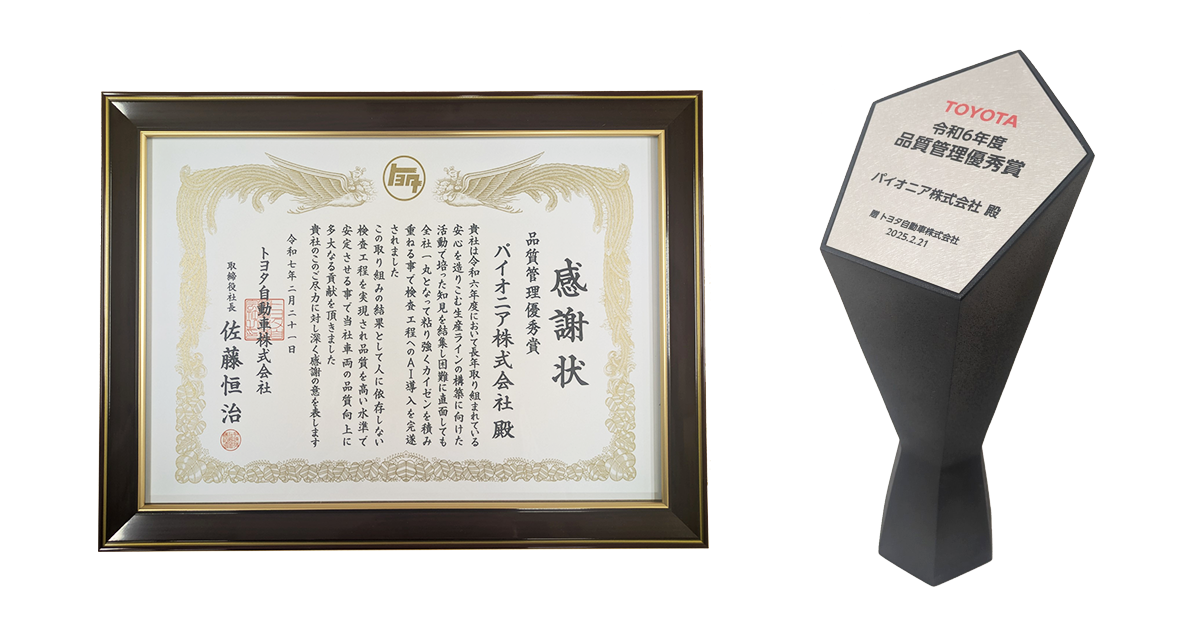News Releaseï¼ڑPioneer Succeeds in Developing Thin Foam/Injection Molding Technology
Information contained in the news release is current as of the date of announcement.
It is subject to change without prior notice.
Tohoku Pioneer Electronic Corporation
Pioneer Electronic Corporation
Pioneer Succeeds in Developing Thin Foam/Injection Molding Technology--- Low Density, Big Malleability and High Internal Loss ---
Tokyo, Japan, April 17, 1997 --- Tohoku Pioneer Electronic Corporation (Share Holder: Pioneer Electronic Corporation 100%, Capital: 4 billion yen. Head Office: Tendo-shi, Yamagata Pref., Japan. President: Souichi Ishijima) and Pioneer Electronic Corporation have announced the development of ultra-thin injection foam technology (thickness 0.25 to1.0 mm, 3 times in foaming magnification) which was not possible with conventional injection molding technology. Using this new technology, mass production of light weight, strong and high internal loss diaphragms for high quality speakers has become possible.
Compared to the conventional diaphragms,the new diaphragms are 1/3 the density, 12 times the rigidity and 1.12 times the internal loss (about 1.5 times compared to the paper diaphragms.)
By changing the proportions of the foaming magnification,the physical properties can be adjusted on a larger scale than the conventional injection molding allows, and this enables a wide variation of design and produces the sound best suited to each speaker system. It is possible to make the elevations and depressions on the diaphragms in order to make its solidity higher. The wall thickness can be also adjusted, resulting in a wide variety of potential speakers. It will be an innovative technology for future speaker production.
Pioneer is planning to introduce car speakers using the new diaphragms in the near future,and is also planning to apply this technology to other resin products as well.
< Background of the Development >
Tohoku Pioneer has long been involved in the injection molding technology for resin diaphragms now widely used for home stereo speakers and car speakers in tough road conditions.
In order to attain high quality sound,performance-enhancing materials such as carbon fibers and mica are added to the resin materials (mainly polypropylene),and this results in less weight, higher solidity and higher internal loss,which is an ideal condition for diaphragms. In this process,Tohoku Pioneer focused its attention on molding technology and molding equipment for such specialized use.
< Method of Producing the Injection Molding --- Patent Pending >
- Resin containing blowing agent is injected into high-temperature molding die rapidly.The blowing agent will be split by heat inside the cylinder,but it will not blow due to high-pressure.
- After the injection is finished, the molding die is opened at a particular place and space is created for foaming. By this procedure,the pressure inside the molding die will decrease and the resin can be blowed.
- As the above mentioned process differs according to several conditions (such as the temperature of the resin,the pressure and the timing of opening the molding die),which depend on the design of the molded product, the thickness,the dimension and its surface condition,a highly accurate computer system is necessary in performing the high-precision injection molding procedure.
- A precisely-made molding die is necessary.
- As the process of the injection foam is very rapid,the time for production of the injection molding is the same as conventional thin molding.
< Main Features of the Injection Foam Diaphragm >
The newly developed injection foam diaphragm has a three-layer construction (the surface-layers are unfoamed skin layers, and the middle-layer is a foamed layer. Due to this construction,it has features as follows:

photo of the layer (conventional diaphragm)

photo of the layer (injection foam diaphragm)
- It is possible to make the foaming magnification up to approx. 3 times, resulting in a light weight diaphragm which is 1/3 the density,thus creating a highly sensitive speaker.
- Compared to the unfoamed diaphragm, a coefficient of elasticity (Young ratio/density ratio) is about 1.4 times,the rigidity(for the same weight, Young ratio multiplied by the third power of the thickness) will be 12 times greater, which results in a high quality speaker with less distortion.
(See attached Diagram 1 and 2.) - As it is able to increase the internal loss by 12%,less distortion and smoother frequency response can be achieved, which results in reproducing natural and clear sound.
(See attached Diagram 3.) - By changing the foaming magnification up to 3 times, the physical properties of the diaphragm can be adjusted so that a wider variety of sounds can be produced.
(See attached Diagram 4.)
Search for Other resources
Search for Keyword
Search by date
-
December 1, 2025ManagementPioneer Announces Completion of Shareholder Transition

-
November 27, 2025EventsPioneer to Showcase Industry-leading Solutions for SDVs and Two-Wheelers at CES 2026 in Las Vegas

-
July 14, 2025ProductsPioneer to Supply Network-Connected Dash Cams to Tokio Marine & Nichido Fire Insurance for Its New Optional Auto Insurance Plan
Providing drivers with prompt and dependable post-incident assistance aided by recorded driving data and video footage
-
June 26, 2025ManagementAnnouncement of Shareholder Change

-
May 29, 2025OtherPioneer’s GHG Emissions Reduction Targets Approved by SBTi

-
May 9, 2025ManagementPioneer Announces Executive Appointments

-
April 1, 2025ManagementPioneer Appoints Werner Koestler as Executive Fellow
as Part of Driving Growth of Its Business in Global Markets
-
March 28, 2025ManagementPioneer to Begin Manufacturing In-Car Products in India
A strategic initiative to better serve local automakers
and drive the growth of its global business
-
March 25, 2025OtherPioneer Recognized by Toyota Motor for Stringent Quality Management for Second Consecutive Year
Upgraded stress-free production process helps keep the quality of Toyota and Lexus cars
at the highest level
-
February 6, 2025ManagementPioneer Launches R&D Operations in Germany
to bolster its car electronics business with European automakers
